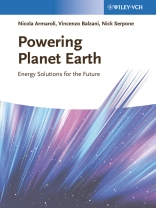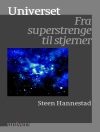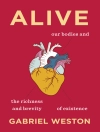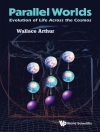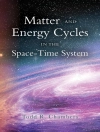In their book Nicola Armaroli, Vincenzo Balzani and Nick Serpone uncover the background details associated with a transition to sustainable energy production that are routinely swept under the table in public discussions. They are not only concerned with the (alleged) advantages
and disadvantages of any one energy generation technology from a technical viewpoint, but also with the ecological, economic, political and social consequences of an inevitable transition. In a highly readable manner aimed at an international audience, the authors introduce the often misused and sometimes abused term ‘energy’ and give a lucid account of the development of energy production from timber to nuclear energy and renewable energies. They compare various energy generation methods with respect to their efficiency and practicability for large-scale implementation and examine if, and how, these methods live up to the expectations and promises their proponents make. In addition, the authors juxtapose the political and economic prerequisites in different regions of the world that advance, or hinder, an energy turnaround. They round off their book by debunking the seventeen most popular myths often cited in discussions on energy issues. As a result, the authors provide ammunition for debate, underpin (and unsettle) opinions using facts, and challenge comfortable and popular chains of reasoning.
Jadual kandungan
PREFACE
WHAT IS ENERGY?
Energy and Related Terms
From One Energy Form to Another
Sources of Energy
The Pillars of the Universe
Particles in Motion
Heat (Warmth) – an Exchangeable Energy
You Can’t Run Away from Them – the Principles of Thermodynamics
Einstein’s Equation: E = mc2
From Kilowatt-hour to the Barrel of Oil
From a Chemical Bond to a Tsunami
YESTERDAY AND TODAY
The Energy Slaves
From Coal to Coal?
Hidden Energy
From Faraday to Blackouts
From Muscle Work to Jet Aircraft
Petroleum to Food
From Fire to Air Conditioning
From Horseback Messengers to E-mails
From Gunpowder to the Atomic Bomb
Emerging Issues
HOW MUCH ENERGY GOES TO WASTE?
The Largest Explosion of All Time
Obese and Miserable
Fruits Out of Season
From Whale Oil to Pollution by Light
At Full Throttle
A Desperate Case – the Transportation System
Let’s Get a Move on
ENERGY IN THE SPACESHIP?S HOLD
Crude Oil
Peaking of Oil Production?
Natural Gas
Coal and CO2 Rise
The Most Traded Commodities
The Hidden Treasure
Energy Also Travels
Costly Energy Invoices
Alliances, Tensions, Wars
COLLATERAL DAMAGE
The Planet Overheats
Agreements and Disagreements
Jailing the Offender?
A Subtle Danger
Rain Is No Longer What It Used to be
Financial Compensation
Minimize! Save the Planet
ENERGY FROM THE ATOM
Splitting the Atom
Nuclear Accidents
An Inconvenient Legacy
Where Do We Store Nuclear Wastes?
We’ll Settle the Bill Later
Current Nuclear Power Plants
Tomorrow’s Nuclear Power Plants (Maybe)
The Harsh Reality of the Marketplace
Solution or Problem?
Nuclear Fusion: if Not Roses . . . Then What?
ENERGY FROM THE SUN
Conversion and Exploitation of Sunlight
From Light to Heat
From Light to Electricity
Concentrating Sunlight
Light to Chemical Energy – Natural Photosynthesis
Light to Chemical Energy – the Sunshine Vitamin
Biomass and Biofuels: Yes, but . . . !
Artificial Photosynthesis
The Hydrogen Myth
ENERGY FROM AIR, WATER, AND LAND
Wind Changes
Wind Farms
Water – between Past and Future
Geothermal Energy
Sea Power
FUKUSHIMA AND THE FUTURE OF NUCLEAR ENERGY
What Happened at Fukushima Daiichi?
The Consequences for the Population
A Lesson from the Fukushima Disaster
What Is Today’s Cost of Nuclear Energy?
Should Italy Go Back to Nuclear Energy?
The Fate of Nuclear Energy
Global Expansion of Nuclear Power?
Is It Worthwhile to Get Energy Using Technologies Exposed to Great Risks?
ENERGY ITALY
Stop Navigating Blind
Conserve Energy! Where? How?
Italy – a Country with an Abundance of Sunlight
Wind, Geothermal Energy, Biomass
Conservation and Renewables – a Summary
ENERGY CANADA
Primary Energy Resources
Oil Sands or Tar Sands?
Oil Sands and Their Environmental Impact
Water Usage
Natural Gas Usage
Greenhouse Gases
Coal in Canada
Natural Gas
Nuclear Energy and Electricity
Electricity
Renewable Energy – Wind Power
Renewable Energy – Solar Power
Renewable Energy – Biomass Energy
Renewable Energy – Geothermal Energy
Renewable Energy – Sea Power
Canada and Energy – Doing More
ENERGY USA
Primary Energy Resources
Coal – Supply and Demand
Natural Gas – Supply and Demand
Nuclear Power
Historical Notes
Present Situation
Nuclear Renaissance
Water Usage in Nuclear Reactors
Plant Decommissioning
Renewable Energy
Renewable Energy – Wind Power
Renewable Energy – Solar Thermal Power
Renewable Energy – Solar Photovoltaic
Renewable Energy – Geothermal Energy
Renewable Energy – Biomass
Renewable Energy – Biofuels
ENERGY UK
Primary Energy Resources
Fossil Fuels
Fossil Fuels – Coal
Fossil Fuels – Natural Gas
Nuclear Power
Nuclear Waste Management and Disposal
Windscale Fire and Decommissioning
Renewable Energy
Renewable Energy – Wind Power
Some Historical Notes
Renewable Energy – Solar Power
Renewable Energy – Geothermal Energy
Renewable Energy – Wave and Tidal Power
Renewable Energy – Biofuels
Electricity in the United Kingdom
GLOBAL TRENDS
A Shot at the Wrong Target
Sustainability of the Photovoltaic Option
Will Renewable Energy Sources Suffice?
But There Is Always a Limit
SCENARIOS FOR THE FUTURE
(Un)Sustainable Development
America’s Big Footprint
The More We Consume, the More We’re Happy?
That’s Enough
Strategies
At the Crossroads
Transition to Renewable Energy Resources
The Scientist’s and the Politician’s Responsibility
Challenges and Opportunities
APPENDICES
INDEX
Mengenai Pengarang
Nicola Armaroli is Research Director in the Italian National Research Council (CNR) at the University of Bologna, Italy. He obtained in Ph D in chemical sciences in 1994 and was post-doc at the Center for Photochemical Sciences at Bowling Green State University, Ohio, USA. His current research is concerned with the photochemistry and photophysics of coordination compounds, carbon nanostructures and supramolecular materials, with focus on luminescence and photoinduced energy- and electron-transfer. This work is of interest both in fundamental science and technological applications, such as solar energy conversion and lighting devices.
Vincenzo Balzani is Professor Emeritus at the University of Bologna where has been doing research and teaching in chemistry since 1973. He was visiting Professor in Canada, Israel, France and Belgium, headed various scientific committees and institutes and has held over 300 lectures worldwide. Alongside his membership of several editorial boards, Vincenzo Balzani has six books and more than 500 papers to his name. His research interests include photochemistry, photophysics, supramolecular chemistry, electron transfer reactions, molecular-level devices and machines, molecular nanotechnology, and photochemical solar energy conversion.
Nick Serpone is Professor Emeritus and Visiting Professor at the University of Pavia, Italy. As a senior academic and research scientist in organic and photochemistry, program manager and industry consultant with extensive North American and international experience, he has an intimate knowledge of the working relationships between academia, industry and government agencies in various countries. Nick Serpone is a prolific editor and contributor to numerous books and journals, with over 360 papers published in a variety of prestigious journals. Nick Serpone is a frequent Keynote Address Speaker and Invited Plenary Lecturer.
